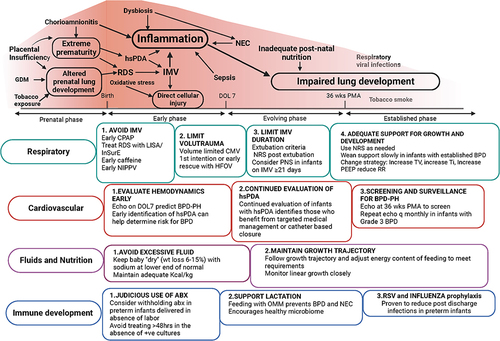Figures & data
Table 1 Summary of Studies Evaluating Trends in BPD Incidence and/or Relationships with Associated Risk Factors
Table 2 A Summary of Evidence-Based Recommendations for Prevention and Management of BPD
Table 3 A Summary of the Strategies and Results of three Recent QI Projects That Successfully Reduced Adverse Pulmonary Outcome
Table 4 A Summary of Emerging Therapies for BPD Currently Being Evaluated in Clinical Trials
Table 5 Summary of the Approach Used for Patients with Established BPD at Nationwide Children’s Hospital, Columbus, Ohio, USA
Figure 1 Multiple exposures during the prenatal and postnatal periods contribute to the development of BPD. Stimuli encountered in the prenatal and early postnatal period appear to have the strongest influence in determining long-term pulmonary outcome. These exposures and their potential for generating inflammatory responses and altered lung development are outlined in the top part of the figure. The lower boxes summarize key strategies needed to prevent and manage early, evolving and established BPD in a system-based manner.

